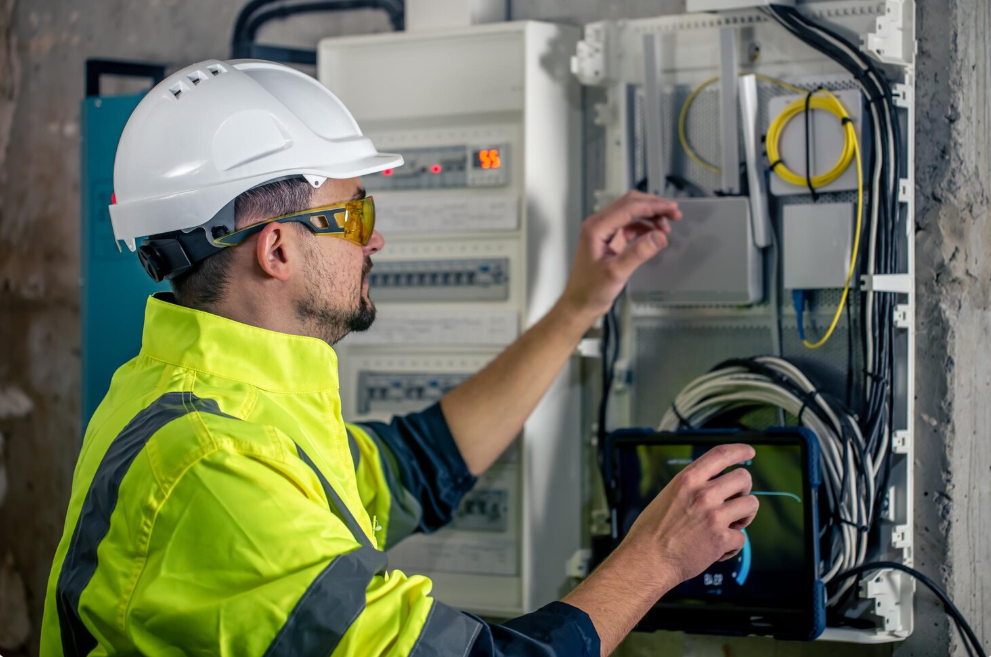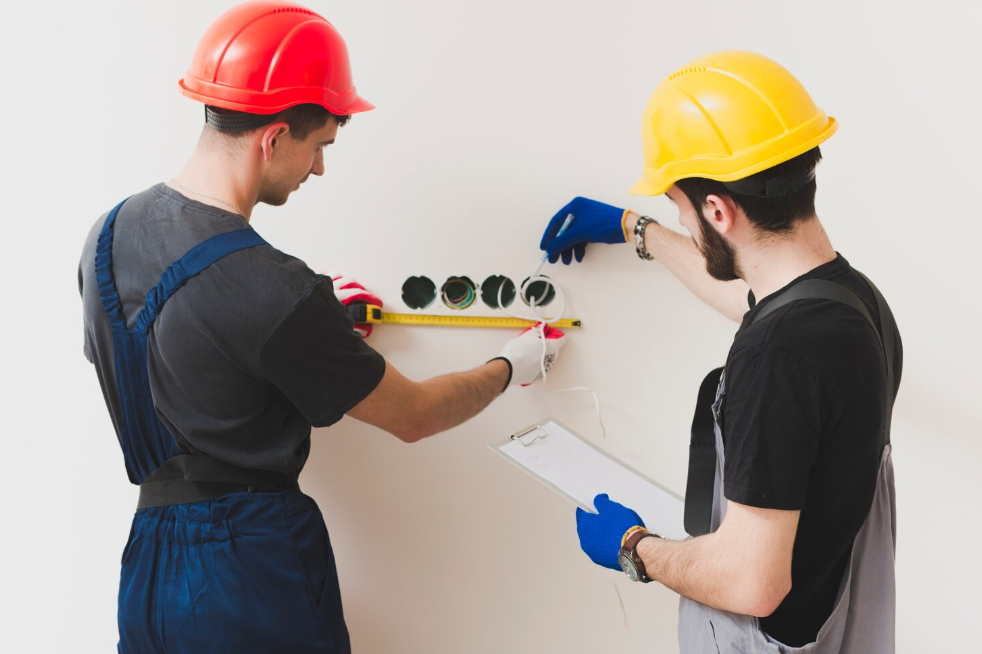Blog
Understanding EMT Conduit: The Ultimate Electrical Protection Guide

Electrical Metallic Tubing, commonly known as EMT conduit, plays a vital role in modern electrical installations. It serves as a pathway that protects and routes electrical wiring in residential, commercial, and industrial environments. Unlike nonmetallic conduits, EMT is made of galvanized steel or aluminum, providing superior durability, corrosion resistance, and mechanical protection. For electricians, engineers, and even DIY enthusiasts, understanding how EMT conduit works, its uses, and its installation process can make all the difference in ensuring safety and efficiency in electrical systems.
What Is EMT Conduit?
EMT conduit is a thin-walled metal tubing used to encase electrical wires, shielding them from physical damage, moisture, and other environmental hazards. It’s lighter than rigid metal conduit (RMC) but stronger than flexible conduit, making it a perfect balance between strength and ease of installation. Its smooth interior allows easy wire pulling, while its galvanized coating prevents rust formation over time.
The Composition and Materials of EMT Conduit
Most EMT conduits are constructed from galvanized steel, which is steel coated with zinc for added corrosion resistance. Some are made from aluminum for lighter weight and better performance in environments where moisture or chemical exposure is a concern. The material choice depends largely on the application and environmental conditions of the installation site.
Why EMT Conduit Is Important
The importance of EMT conduit lies in its ability to ensure the safety of electrical systems. By protecting conductors from mechanical damage, fire hazards, and moisture, EMT minimizes the risk of short circuits, electrical shocks, or wire deterioration. It also ensures compliance with the National Electrical Code (NEC), which mandates proper protection and routing of electrical wiring.
Common Applications of EMT Conduit
EMT conduit is widely used across a variety of electrical projects. In residential buildings, it’s often found in basements, garages, and utility areas where added protection is needed. In commercial and industrial facilities, it’s used for wiring that runs through exposed ceilings, walls, or mechanical rooms. It’s also popular in data centers, hospitals, and educational institutions where safety and organization of electrical systems are paramount.
Advantages of Using EMT Conduit
One of the biggest advantages of EMT conduit is its durability. Its rigid structure protects wires from crushing and impact. Additionally, its metal surface can serve as a grounding path, eliminating the need for separate ground wires in certain cases. It’s also reusable, easy to cut, and can be bent with simple tools, making it a cost-effective and sustainable choice for long-term electrical installations.
Different Sizes of EMT Conduit
EMT conduit comes in a variety of sizes, typically ranging from ½ inch to 4 inches in diameter. The size you choose depends on the number and size of conductors being installed. Smaller sizes are ideal for residential projects with fewer circuits, while larger sizes are used in commercial setups that handle multiple electrical systems simultaneously. The NEC provides detailed tables to help electricians determine the proper conduit fill for each size.
How to Install EMT Conduit
Installing EMT conduit involves precise planning and execution. Electricians start by measuring and cutting the tubing using a conduit cutter or hacksaw. Afterward, they smooth the cut ends to prevent wire damage. Bends are made using a conduit bender to navigate walls, ceilings, or obstacles. Once shaped, the conduit sections are joined using compression or set-screw fittings. Finally, conductors are pulled through the tubing using fish tape, ensuring they remain undamaged and properly organized.
Bending EMT Conduit
Bending EMT conduit requires skill and accuracy. Proper bends ensure neat installations and compliance with code requirements. Tools like hand benders, mechanical benders, or hydraulic benders are used depending on conduit size. Electricians often practice making “90-degree,” “offset,” or “saddle” bends to navigate around corners, beams, and fixtures. Each bend must maintain a minimum radius to prevent wire stress or insulation damage.
Fittings and Connectors for EMT Conduit
Fittings and connectors are essential for joining EMT conduit sections or connecting them to electrical boxes. These components come in two main types: compression fittings and set-screw fittings. Compression fittings provide a watertight seal, ideal for outdoor or damp locations. Set-screw fittings, on the other hand, are easier to install and are often used indoors. Both types ensure a secure and continuous grounding path throughout the system.
Corrosion Resistance and Longevity
One of EMT conduit’s defining features is its corrosion resistance. The galvanized coating shields it from moisture, chemicals, and environmental wear, prolonging its lifespan. In coastal or industrial settings, aluminum EMT conduit is preferred since it naturally resists oxidation. Regular inspection and maintenance further ensure long-term performance and safety, preventing costly repairs or replacements.
Safety Standards and Code Compliance
Every EMT conduit installation must comply with the National Electrical Code (NEC). The NEC specifies rules for conduit fill, support spacing, grounding, and environmental suitability. For instance, EMT conduit must be securely fastened within three feet of each box or fitting and every ten feet along its run. Following these standards not only ensures safety but also prevents inspection failures or system malfunctions.
Differences Between EMT and Other Conduits
While EMT is popular, it’s essential to understand how it compares to other conduit types. Rigid Metal Conduit (RMC) is thicker and provides maximum protection but is harder to install. Intermediate Metal Conduit (IMC) offers a balance between EMT and RMC in thickness and weight. Flexible Metal Conduit (FMC), meanwhile, is best for temporary or adjustable connections. EMT stands out for its affordability, versatility, and ease of handling, making it the go-to choice for many electricians.
Grounding and Bonding with EMT Conduit
EMT conduit can serve as an effective grounding conductor when properly installed. Its metal-to-metal connections provide a continuous path for fault currents, enhancing overall system safety. However, all fittings and couplings must be tight and corrosion-free to maintain electrical continuity. In sensitive installations, separate grounding conductors may still be added for redundancy.
Cost Considerations and Efficiency
When evaluating conduit options, EMT stands out as one of the most cost-effective choices. It’s cheaper than RMC or IMC and easier to install, reducing labor costs. Additionally, its reusability allows electricians to repurpose sections during renovations or upgrades, minimizing material waste. Despite being budget-friendly, EMT doesn’t compromise on protection or quality, offering long-term value in every project.
Environmental Benefits of EMT Conduit
Since EMT conduit is made from recyclable metals like steel and aluminum, it’s environmentally friendly. Used conduits can be recycled and reprocessed, reducing construction waste and supporting sustainability efforts. Moreover, its durability minimizes the need for frequent replacements, making it a responsible choice for eco-conscious builders.
Maintenance and Troubleshooting

Maintaining EMT conduit systems involves regular inspection for rust, loose fittings, or physical damage. Electricians should ensure all junctions remain tight and that the conduit’s grounding capability is intact. If corrosion appears, sections can be replaced easily without disturbing the entire wiring setup. Troubleshooting is also straightforward, as the metallic tubing allows easy tracing of circuits and fault detection.
Choosing the Right EMT Conduit
Selecting the appropriate EMT conduit depends on the project’s location, size, and requirements. For dry indoor environments, standard galvanized EMT works perfectly. For damp or outdoor locations, compression fittings and weatherproof boxes are essential. The goal is to balance protection, flexibility, and cost to achieve optimal performance and code compliance.
Conclusion
EMT conduit remains one of the most practical and reliable solutions for protecting electrical wiring. Its lightweight yet strong construction, corrosion resistance, and ease of installation make it an industry favorite. Whether used in homes, offices, or factories, it ensures safety, organization, and longevity for any electrical system. By adhering to installation best practices and NEC standards, electricians can achieve both efficiency and safety in their work. Investing in quality EMT conduit is more than just following code—it’s a commitment to building safe and sustainable electrical infrastructure for the future.
FAQs
What does EMT stand for in electrical work?
EMT stands for Electrical Metallic Tubing, a type of thin-walled metal conduit used to protect and route electrical wiring.
Can EMT conduit be used outdoors?
Yes, EMT can be used outdoors when properly sealed with compression fittings and protected against corrosion.
How is EMT conduit different from rigid conduit?
EMT is thinner, lighter, and easier to install than rigid conduit, though rigid conduit offers greater impact protection.
Does EMT conduit need to be grounded?
Yes, EMT conduit can act as a grounding conductor if installed correctly with secure metallic connections.
What sizes does EMT conduit come in?
EMT conduit typically ranges from ½ inch to 4 inches in diameter, with the size chosen based on the number of conductors being installed.
-

 Tech1 year ago
Tech1 year agoHow to Use a Temporary Number for WhatsApp
-

 Business2 years ago
Business2 years agoSepatuindonesia.com | Best Online Store in Indonesia
-

 Social Media1 year ago
Social Media1 year agoThe Best Methods to Download TikTok Videos Using SnapTik
-

 Technology1 year ago
Technology1 year agoTop High Paying Affiliate Programs
-

 Tech10 months ago
Tech10 months agoUnderstanding thejavasea.me Leaks Aio-TLP: A Comprehensive Guide
-

 FOOD1 year ago
FOOD1 year agoHow to Identify Pure Desi Ghee? Ultimate Guidelines for Purchasing Authentic Ghee Online
-

 Instagram3 years ago
Instagram3 years agoFree Instagram Auto Follower Without Login
-

 Instagram3 years ago
Instagram3 years agoFree Instagram Follower Without Login



















